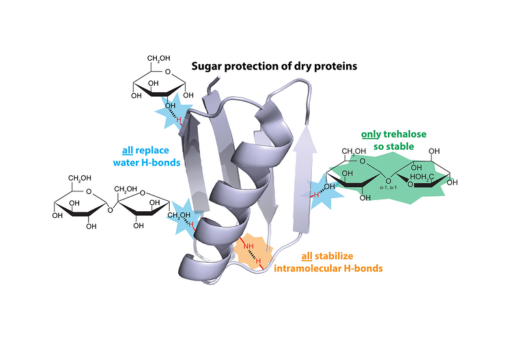How Sugars Protect Dry Protein Structure
Abstract
Extremotolerant organisms and industry exploit sugars as desiccation protectants, with trehalose being widely used by both. How sugars, in general, and the hydrolytically stable sugar trehalose, in particular, protect proteins is poorly understood, which hinders the rational design of new excipients and implementation of novel formulations for preserving lifesaving protein drugs and industrial enzymes. We employed liquid-observed vapor exchange nuclear magnetic resonance (LOVE NMR), differential scanning calorimetry (DSC), and thermal gravimetric analysis (TGA) to show how trehalose and other sugars protect two model proteins: the B1 domain of streptococcal protein G (GB1) and truncated barley chymotrypsin inhibitor 2 (CI2). Residues with intramolecular H-bonds are most protected. The LOVE NMR and DSC data indicate that vitrification may be protective. Combining LOVE NMR and TGA data shows that water retention is not important. Our data suggest that sugars protect protein structure as they dry by strengthening intraprotein H-bonds and water replacement and that trehalose is the stress-tolerance sugar of choice because of its covalent stability.
Citation
How Sugars Protect Dry Protein Structure
Julia A. Brom, Ruta G. Petrikis, and Gary J. Pielak
Biochemistry 2023 62 (5), 1044-1052
DOI: 10.1021/acs.biochem.2c00692


